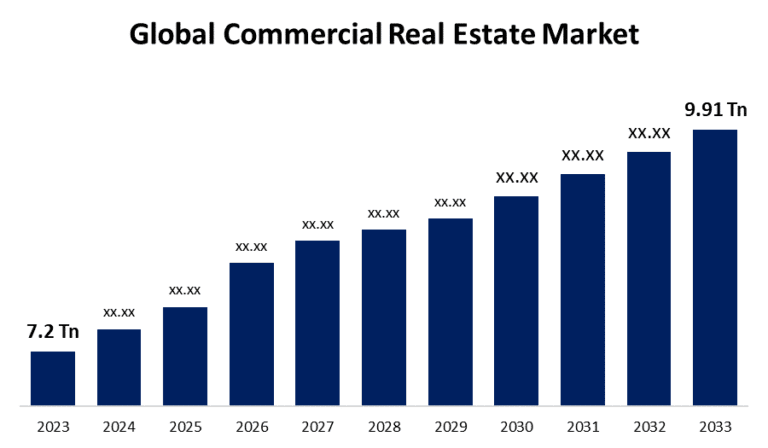The Impact of COVID-19 on Commercial Real Estate
How the Pandemic Reshaped Latin American CRE
In 2020, the COVID-19 pandemic disrupted the global commercial real estate (CRE) market, and Latin America was no exception. Lockdowns and economic uncertainty led to a sharp decline in CRE transactions, with sales volumes dropping by approximately 1-41% across asset classes. Office spaces faced significant challenges as remote work surged, reducing demand by an estimated 16% in major cities like São Paulo and Mexico City. Retail properties, particularly in Brazil and Argentina, saw vacancies rise due to temporary closures of non-essential businesses. However, industrial and logistics sectors showed resilience, driven by a 20% surge in e-commerce demand, boosting warehouse investments in countries like Chile and Colombia.
Office Sector: Adapting to Remote Work
Shifts in Office Space Demand and Valuation
The office sector in Latin America experienced a seismic shift in 2020 due to hybrid and remote work trends. Vacancy rates in urban centers like Bogotá and Buenos Aires climbed to 10-12%, reflecting reduced demand for traditional office spaces. According to industry reports, office building valuations in the region fell by approximately 17% as companies downsized or renegotiated leases. Flexible workspaces, such as coworking hubs, gained traction in Brazil, with 64% of surveyed landlords hesitant to lease to coworking giants like WeWork due to financial instability. Adapting to these shifts required landlords to offer shorter lease terms and invest in tech-enabled spaces.
Retail Sector: Resilience Amid Challenges
Retail’s Recovery and Adaptation Strategies
Despite initial setbacks, the retail sector in Latin America showed surprising resilience by late 2020. Suburban retail centers in Mexico and Peru saw vacancy rates stabilize at around 10%, as demand for local shopping hubs grew post-lockdown. The National Association of Realtors reported a modest 2% decline in retail leasing volumes in Q1 2020, with recovery signs by Q4 as economies reopened. Retailers adapted by integrating e-commerce fulfillment into physical stores, particularly in Brazil, where omnichannel strategies drove foot traffic. Investors focused on repurposing underperforming malls into mixed-use developments to boost long-term value.
Industrial and Logistics: The Bright Spot
E-Commerce Fuels Industrial Growth
The industrial and logistics sector emerged as a standout in Latin America’s 2020 CRE market. Driven by e-commerce growth, warehouse demand surged, with countries like Mexico benefiting from nearshoring trends tied to U.S. supply chains. Investment in logistics properties increased by 5-10% in key markets like Guadalajara and São Paulo, with average industrial rents rising 7% year-over-year. The need for last-mile delivery hubs near urban centers spurred development, particularly in Colombia, where industrial transactions reached $500 million in Q3 2020. This sector’s strength offset losses in other CRE segments.
Multifamily Properties: A Mixed Performance
Balancing Demand and Oversupply
Multifamily properties in Latin America had varied outcomes in 2020. In cities like Santiago and Lima, demand for rental housing remained steady due to urbanization, with vacancy rates holding at 6-7%. However, oversupply in high-end markets, such as parts of São Paulo, led to rent concessions and a 5% dip in valuations. The pandemic’s economic toll, including job losses, prompted some developers to offer flexible payment terms to attract tenants. Investors increasingly targeted affordable housing projects, supported by government incentives in Brazil and Mexico, to capitalize on stable demand.
Capital Markets and Investment Trends
Navigating Financing Challenges
High interest rates and economic uncertainty in 2020 strained CRE financing in Latin America. The Mortgage Bankers Association noted a 9% increase in global commercial and multifamily mortgage originations, but Latin America lagged due to tighter credit conditions. Brazil’s high borrowing costs, with rates around 7-8%, deterred some investors, while Chile’s low-rate environment (around 3%) supported transaction activity. Private equity “dry powder” estimated at $100 billion globally fueled selective CRE investments, with a focus on logistics and multifamily assets. Investors prioritized domestic markets, with cross-border deals dropping to 23% of total volume.
Sustainability and Technology Integration
Embracing ESG and Proptech
Sustainability and technology became focal points for Latin American CRE in 2020. Environmental, social, and governance (ESG) considerations gained traction, with developers in Chile and Costa Rica adopting green building standards to cut operational costs by up to 20%. The U.S. Green Building Council highlighted that green-certified buildings in the region increased asset values by 10%. Proptech adoption, including IoT for property management, grew by 30% in markets like Mexico City, enhancing tenant experiences and operational efficiency. These trends positioned CRE for long-term resilience.
Regional Variations in Latin America
Country-Specific Dynamics in 2020
Latin America’s CRE market varied by country in 2020. Brazil’s robust GDP growth supported industrial and retail recovery, despite office sector struggles. Mexico’s proximity to U.S. markets drove logistics investments, with $1 billion in industrial sales in Q1. Chile’s stable economy and low interest rates bolstered multifamily and office transactions, while Argentina’s economic volatility led to a 15% drop in CRE valuations. Colombia emerged as a hotspot for logistics and mixed-use developments, with Bogotá seeing a 5% rise in CRE investment volumes. Understanding these nuances was critical for strategic investments.
Positioning for Recovery
Strategies for CRE Success Post-2020
The 2020 CRE market in Latin America faced unprecedented challenges but also revealed opportunities for adaptation. While office and retail sectors navigated disruptions, industrial and logistics properties thrived, driven by e-commerce and supply chain shifts. Investors who embraced flexible leasing, ESG standards, and proptech gained a competitive edge. As economies stabilized, focusing on resilient sectors, leveraging local expertise, and aligning with macroeconomic trends positioned CRE stakeholders for recovery and growth in 2021 and beyond.

